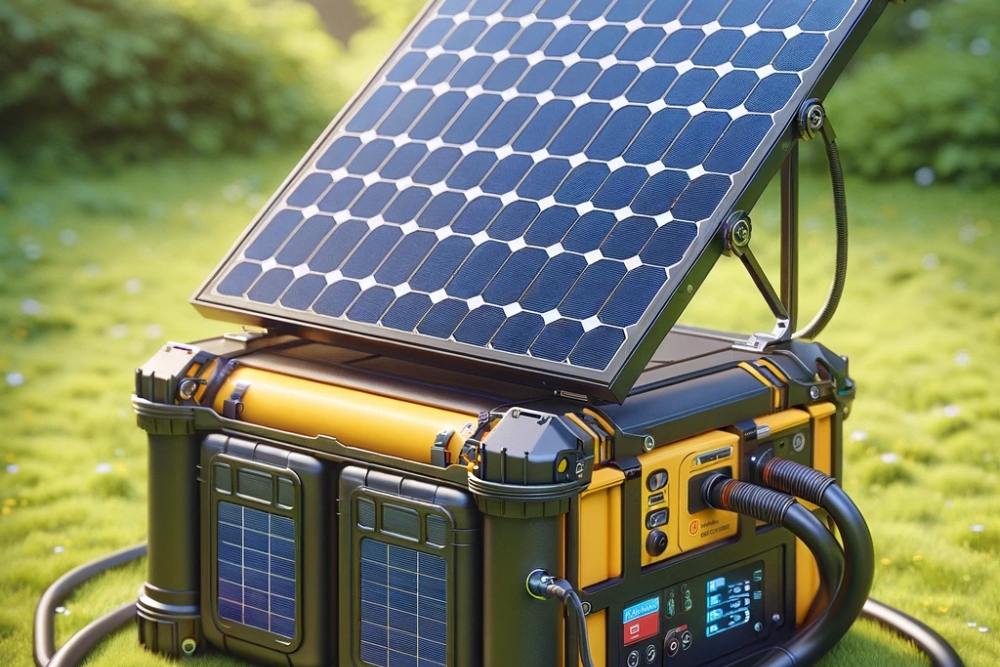Solar Generators: Clean and Portable Power for a Variety of Needs
Solar generators provide a clean, quiet, and portable source of power, making them ideal for homes, camping, emergencies, and outdoor events. This guide explains how they work, the key benefits, and what to consider when choosing a model. Learn how this technology can offer reliable, sustainable energy while reducing dependence on fossil fuels and helping to save money over time.

How Solar Generators Work
Solar generators operate through a simple yet effective process that converts sunlight into usable electricity. The system begins with photovoltaic (PV) panels that capture solar energy. These panels contain silicon cells that create an electric current when exposed to sunlight through what’s known as the photovoltaic effect. This direct current (DC) electricity is then sent to a charge controller, which regulates the voltage and current to prevent battery damage. The energy is stored in a battery bank—typically lithium-ion, lead-acid, or more recently, lithium iron phosphate (LiFePO4) batteries. When power is needed, an inverter converts the stored DC electricity into alternating current (AC), which is the standard form of electricity used by most household appliances and devices. This complete system enables users to generate, store, and utilize clean energy virtually anywhere sunlight is available.
Benefits of Solar Generators
Solar generators deliver numerous advantages that make them attractive alternatives to conventional power sources. First and foremost, they provide clean, renewable energy that produces zero emissions during operation, significantly reducing your carbon footprint. Unlike gas generators, solar models operate silently, making them ideal for camping trips, outdoor events, or residential areas with noise restrictions. The economic benefits are substantial as well—after the initial investment, solar generators harness free energy from the sun, eliminating ongoing fuel costs. These systems require minimal maintenance compared to gas generators, with fewer moving parts and no need for oil changes or fuel storage. Additionally, solar generators offer remarkable versatility, powering everything from small electronics to larger appliances depending on their capacity. For those concerned with emergency preparedness, they provide energy independence during grid outages without requiring fuel stockpiles that may expire or become unavailable during disasters.
Using Solar Generators at Home and Outdoors
Solar generators serve as versatile power solutions across various settings. At home, these systems can function as backup power during outages, keeping essential appliances running without the noise or fumes of gas generators. Many homeowners use them to power specific areas or appliances, such as home offices, medical devices, refrigerators, or outdoor lighting systems. Some even integrate them with existing solar panel installations to maximize energy independence. In outdoor settings, solar generators truly shine. They’re perfect companions for camping trips, providing clean power for lights, cooking equipment, and device charging without disrupting the natural quiet of wilderness areas. RV enthusiasts rely on them to extend boondocking capabilities without running noisy onboard generators. Construction sites and remote work locations benefit from their portable power without requiring fuel deliveries. During outdoor events like festivals, markets, or gatherings, solar generators can power sound systems, lighting, or vendor needs without contributing to noise pollution or requiring access to electrical outlets.
Factors to Consider When Choosing a Solar Generator
Selecting the right solar generator requires careful evaluation of several key factors. Battery capacity, measured in watt-hours (Wh) or ampere-hours (Ah), determines how much energy your generator can store—match this to your power needs by calculating the wattage requirements of devices you plan to run and how long you’ll need them. Power output, measured in watts, indicates how much electricity the generator can deliver simultaneously; ensure it exceeds the starting watts of your largest appliance. The type and quality of solar panels significantly impact charging efficiency—consider their wattage, portability, and durability. Weight and portability matter especially for travel use; some models feature wheeled designs or separate components for easier transport. Battery chemistry affects longevity, performance, and safety; lithium-ion offers good energy density, while LiFePO4 provides longer lifespan and better safety characteristics. Expansion capability allows for adding more battery capacity or solar panels as needs grow. Additional features worth considering include multiple output types (AC outlets, USB ports, DC outlets), display quality, weatherproofing, and warranty length—ideally at least two years for substantial investments.
Maintenance Tips for Solar Generators
Proper maintenance ensures your solar generator remains reliable and achieves its maximum lifespan. Start with regular inspection and cleaning of solar panels—dust, dirt, leaves, or snow can significantly reduce charging efficiency, so gently clean surfaces with a soft cloth and mild soap solution. Keep battery connections clean and tight, inspecting for corrosion or damage. Most modern solar generators use batteries that perform best when kept between 20-80% charge rather than constantly at 100% or fully depleted. Store your generator in temperature-controlled environments when possible—extreme heat or cold can diminish battery performance and lifespan. Periodically exercise your system by using and recharging it, as batteries that sit unused for months may deteriorate faster. Follow manufacturer-specific maintenance guidelines, including any recommended firmware updates that may improve performance or fix issues. Finally, perform regular functional tests of all components—check that inverters, charge controllers, outlets, and displays work properly to catch potential issues before they become critical during an emergency or outdoor adventure.
Conclusion
Solar generators represent an increasingly practical solution for diverse power needs, balancing environmental benefits with genuine utility. As technology improves and costs continue to decrease, these systems are becoming more accessible to consumers seeking reliable, clean energy alternatives. Whether deployed for emergency preparedness, outdoor recreation, or everyday household use, solar generators offer independence from traditional power sources while contributing to a more sustainable energy landscape. By understanding how these systems work, their various applications, and how to select and maintain them properly, users can make informed decisions that align with both their practical power needs and environmental values.






